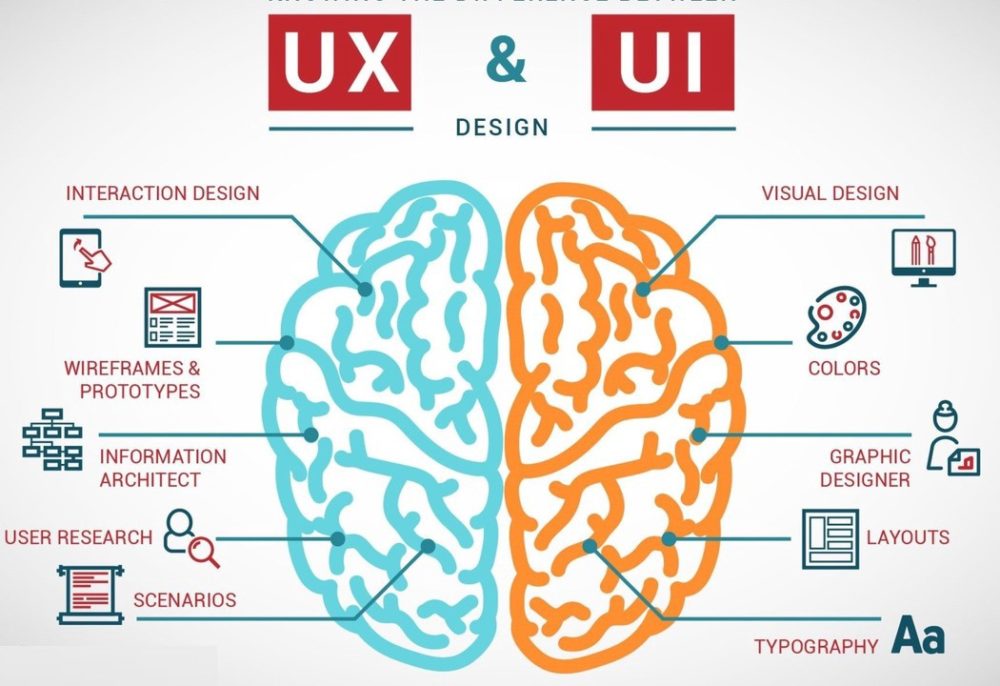The corporate world has finally started catching up with UX designers. Companies from different niches and markets are trying to win the best UX experts they can.
As these specialists complete their projects, many of the hiring firms are very happy with the products they get in the end. However, it doesn’t mean that they have learned how and why they can and should continue to execute high-quality user experiences in their future projects.
Principles of cognitive science and neuroscience combined with the tenets of proper customer experience (CX) and user experience (UX) make something vaguely known as ‘neuro design,’ which allows design specialists to convey their creative views better.
Neuro design is a rather new concept, an approach that focuses on mental triggers behind customer experience for creating more intelligent designs based on user behavior, client interactions, and social trends, among other things.
This concept can be useful in explaining why a particular experience is inherently bad or good. Comprehending what’s going on from a neuroscientific perspective empowers UX designers and UX design agencies to resolve user and customer experiences that lead to excellent solutions. You can find more information about the top 5 UX design agencies in the world here.
Neuro design is building around the comprehension of the target user’s essence in even the smallest details. This approach requires the conduction of contextual and behavioral research before deciding on a project’s primary priorities.
Running objective interviews with potential users at the very beginning of a design project, the UX team can get the right client insights that include both negative and positive experiences. Neuro design research paves the way for creating a product or service that will be tailored specifically for the target audience.
Making Sense of the Human Brain
One can tell what triggers users at a cognitive level by merely monitoring the customer journey. Future improvements can use the data acquired via such monitoring.
There are three major parts in the human brain: the brain stem, limbic system, and the neocortex. The prefrontal cortex located within the neocortex makes humans distinct from all the other species. It deals with understanding text, rationalization, logic, and even complex emotion.
The brain stem is about 300 million years old: it deals with principle body functions, such as breathing. The limbic system is considered to be 200 million years old: it deals with such things, like emotions.
The neocortex is only 200,000 years old. As of the prefrontal cortex, it’s just 30,000 years old, and it is this part of the brain that makes us human, as we’ve outlined above – this is the thing that provides us with intellect and reason. It is the part of the brain UX designers have to work with when creating their designs.
And the two older parts of the brain only react to non-verbal signals and aren’t capable of understanding text.
But, why do design agencies and companies focus primarily on textual content on their websites, if most of the human brain recognizes only stimuli?
Human senses are processing over 11 million bits of data each second, and only 40 of them belong to the conscious domain. In other words, good user experience doesn’t come from reasoning and logic.
As surprising as it may sound, to succeed, UX designs have to cater to the older parts of the human brain – it’s not only about making users think but also feel good. And this is what neuro design is about.
Wrap a SCARF around Your Design

Back in 2008, David Rock, the NeuroLeadership Institute co-founder, devised the SCARF theory. He described this model in an article named “Your Brain at Work,” and it proposes an idea that the initial social interaction motivation is to maximize rewards and minimize threats. Another social interaction motivation is related to primal survival needs. Dr. Rock concludes that humans require social interaction as much as food and water.
- As of his SCARF theory, Dr. Rock has based it on the five things the brain always looks for:
- Status or our significance respective to others;
- Certainty or our capability of predicting the future;
- Autonomy or having a feeling of control over things that happen around us;
- Relatedness or feel that you’re safe with the other people;
- Fairness or awareness about fair dealing between people.
If your UX team ultimately decides to apply SCARF theory to a design project, you will most certainly be surprised at the amount of positive user feedback. Consideration of these needs helps to build a product with better connectivity to the audience.
Take Mirror Neurons and Neuroplasticity into Account

Mirror neurons are another vital principle in neuroscience. This concept can help understand why people do what they do and how they learn new things by imitating them. In the late ’90s, neuroscientists found out that experiences change brain structure. Before that, the general notion was that the adult brain never turns after forming.
In reality, mirror neurons create an experience perception. Once these perceptions have been established, the brain expects the same results from each next identical experience. Take a moment and think of how mobile apps have altered software design. For example, when a user is used to a web app and then turns on a corresponding mobile application, they automatically expect to have a similar experience with it. It happens because mirror neurons are getting ready for the same result.
Take LinkedIn, for instance. When people transition from the browser version to its mobile version, they expect to have similar experiences.
Even though the mobile app may be arranged differently, its architecture quite accurately resembles that of the web version. You can see status updates, check current news, find out who has visited your profile recently and make new connections. In this case, mirror neurons of the users don’t intervene because they consider the experience safe.
As for neuroplasticity, it is a neural mechanism that alters the brain and, thus, provides companies with a chance to adapt to their clients’ actions. To understand how this mechanism works, at first, imagine a tree. Depending on how much sun shines on it or rain falls daily, branches gradually alter the structure to get as much sun and water as possible. And this is pretty much how the human brain changes via daily experiences.
By applying the principles of neuro design to product design, UX agencies get a better understanding of what interactions are most important to their customers in a given context.
It, in turn, allows both companies and UX teams to develop digital products and services that accumulate positive perceptions. After a while, these accurate perceptions alter the structure of users’ brains and make them feel tighter connections to brands.
The Bottom Line
Comprehension of the deeper instinctual and neurological needs of the end-users allows UX agencies to develop intuitive and supportive designs, thus ensuring excellent client experience.
Neuro design is a highly useful approach towards user experience, as it helps understand how and why they should constantly evolve their connection to their customers. It’s not enough to roll out an app and forget about it. Considering user feedback and comments helps to get a better idea of what the target audience wants.
Add some of the most practical neuroscience concepts to that, and you will be able to create outstanding designs that people will feel connected with.





